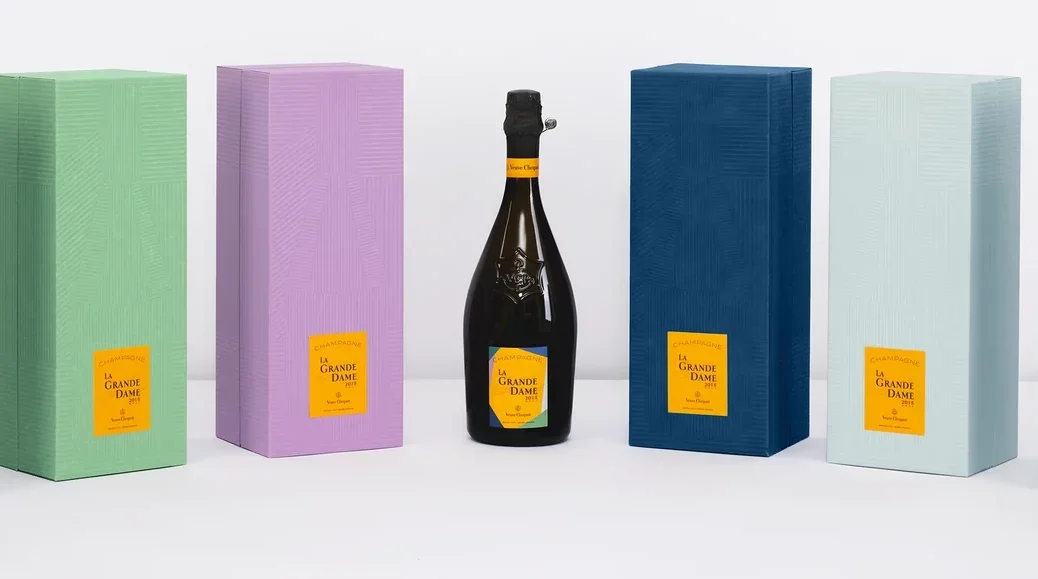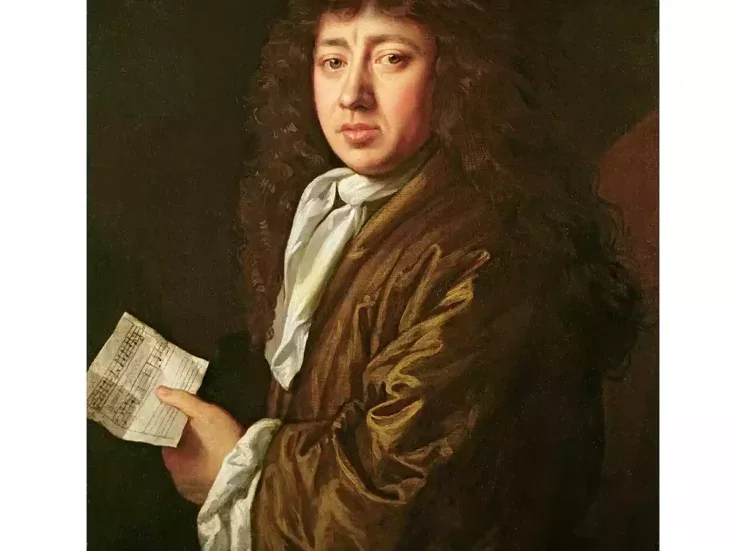
Didier Mariotti, chef de cave at Veuve Clicquot, is a Burgundian. He is amused by the fact that those who appreciate Champagne may, almost by default, equate Pinot Noir with power and structure. These components are present for sure, but they are not key, just as they are not key in a great wine from Morey-St-Denis or Volnay.
This view was shared by the Grande Dame herself, when, in the second decade of the 19th century, she acquired vineyards in the key Pinot Noir villages of the Montagne de Reims, specifically Verzy, Bouzy, and Ambonnay. “Our black grapes give the finest white wines,” so she said, apparently, and with no lack of prescience. The backbone of the house was in place and all that has come to pass has, to a greater or lesser degree, followed this template, quite an achievement when one considers just how large a house Veuve Clicquot is today.
The Grande Dame Champagne was introduced in 1972, when the house celebrated its bicentenary with the 1962 vintage. 2015 is its 24th outing and is made up of 90 percent of Pinot Noir and 10 percent of Chardonnay, just, one would have thought, what the Widow would have wanted. In the 1980s the style was modified, however, when the incumbent chef de cave, Jacques Péters, himself from the southern grand cru of Le Mesnil-sur-Oger, introduced more Chardonnay into the cuvée.
This “new” blend persisted until 2008, when his successor, Dominique Demarville reverted to the 90/10 division between the grapes, a template which Mariotti is more than happy to follow. Just as long as we don’t immediately think that this will engender musculature and power at the expense of all that he cherishes in a glass of Champagne, or Burgundy, namely structural elegance and textural integrity. Didier underlines this by asking us to taste the 2015 from two glasses, one more flute-like and the other with a broader aperture, thereby illustrating respectively both structure and texture, the vertical and the horizontal complexity of a youthful Champagne de garde. The differences are telling and gloriously complementary.
La Grande Dame 2015: an easy vintage
Mariotti describes 2015 as an “easy” vintage, “solaire” even, and certainly blighted by fewer of the early-season challenges (frost, hail, and rain among others) which had confronted its predecessor, the 2012. He compares it to the sunny 1976 and also, interestingly, to 2022, although he notes that the latter was harvested significantly earlier, in the second half of August.
The 2015 was interesting in that its phenolic development was more measured; warm it may have been, but the growing season was “ traditional” ( if such a word can still apply with the shifts in climate) and the harvest was brought in, as of old, in September. Even so the potential sugar did not lack the generosity of a warm vintage, and was recorded as 10.5 % ABV. Phenols have been controlled by cereal-based herbicides in the vineyard and are key to an understanding of the wine. Didier always seeks a little bitterness on the finish of his Champagnes ( the French term “amertume noble” is hard to beat), even more important in a warm year. One solution has been to rely more and more on the north-facing villages of the Montagne de Reims, especially Verzy and Verzenay, and then to add what he describes as “seasoning” from the more generous and robust styles which come courtesy of Bouzy, Ambonnay, and Aÿ.
What about oak, someone asks; the 1962 would have been fermented in oak, after all? La Grande Dame is far too elegant for oak, Didier maintains, warming to his theme; the well-publicized introduction of a little wood (small percentages and large vessels) at Veuve Clicquot has thus far been restricted to the Vintage wine. It is not appropriate for La Grande Dame.
Chardonnay in La Grand Dame: a small blend with a big impact
Will La Grande Dame ever become a Blanc de Noirs? Unlikely it seems and even if the Chardonnay, sourced from the Côte des Blancs grands crus of Avize and le Mesnil-sur-Oger, only makes up 10 percent of the blend, this 10 percent is key to the acidic structure and therefore balance of a wine that is built to last. Didier says the same of the dosage, which has not shifted as significantly as with some other labels, and is recorded at 6 g/l. Thus elements of conservatism themselves lightly season the brew, which is in itself reassuring.
We are invited to taste the 2012 too, no great inconvenience, and the Rosé from 2012, the 2015 being not quite ready for release. It has been made by assemblage, the method attributed to the redoubtable Widow, radical at the time but now far more popular than the unpredictable saignée maceration technique.
The source of the red wine is the lieu-dit of Clos Colin in Bouzy, such a venerable plot in the mythology of the House that it actually pre-dates the Widow herself, having been acquired by her father-in-law, Philippe Clicquot, in 1741. Debate ensues as to whether it is actually a clos, in the sense of a walled vineyard. Technically not, Didier shrugs; and it has never actually had a wall! The source, nonetheless, of some outstandingly elegant Pinot Noir (Le Musigny of Champagne) and traditionally therefore the exclusive blending still component of the Grande Dame Rosé. Some 2,000 bottles of Clos Colin 2012 have also been vinified without bubbles as a stand-alone wine—a prototype of a Coteaux Champenois which Didier maintains, without giving too much away, is in the pipeline. Exciting times at La Maison Veuve Cliquot.
And with the 2015, we have an exciting new release. La Grande Dame is more reticent, appreciably more so, than LVMH stablemate Dom Pérignon, when it comes to the market-place. No 2013, for example, and no late-disgorged Oenothèque variant. It is only released, one feels, in the very best of years, most especially the best of years for Pinot Noir, and the latest trilogy of 2008, 2012, and now 2015 proves this point eloquently.
Tasting notes of Veuve Clicquot La Grande Dame
2015 La Grande Dame
90 Pinot Noir /10 Chardonnay; disgorged October, 2021; dosage 6 g/l
A soft color and gentle mousse; the nose is at first flinty-reductive, oyster shell and green apple to the fore, red fruit hitherto intriguingly absent. The floral notes are next to appear; jasmine and a touch of honeysuckle; delicate and upstanding. A little aeration and a little more by way of revelation; a citric foundation, then a slow build of honey, nutmeg, and just a whisper of ginger. Subtle power, la force tranquille; the dance of the seven veils is well under way, this promising plenty of drama to come and a more than happy ending. 94-95
2012 La Grande Dame
90% Pinot Noir / 10% Chardonnay; Disgorged July, 2018; dosage 6g/l
The color is appreciably deeper than the 2012; a little more development from what was a concentrated year. This time the Pinot Noir speaks to us loud and clear, all the potential that was evident on release fulfilled; here we enjoy the interplay between red fruit, phenolic power, and a savory subplot, then the bitterness which Didier mentioned, far more apparent on a wine with a little more age, teasingly embroidered into the finish. 96
2012 La Grande Dame Rosé
90/10 including 13% red wine from Clos Colin; dosage 8 g/l
Color was key to La Veuve Clicquot. “I taste the rosé with my eyes,” is another of her pithy sayings Hence the focus on the control of the assemblage method. I wonder what she would have made of the color of the 2012, which is far from intense; a soft nacreous salmon rather than onion skin or a more flamboyant pink. The subtlety is writ large in the wine too, the 13% of red wine added from Clos Colin in no way undermining a silky harmonious texture…cranberry, rosehip, juniper, soft spice, and brioche. Such structural self-assurance will be equally at home as an aperitif or at the table. 95






